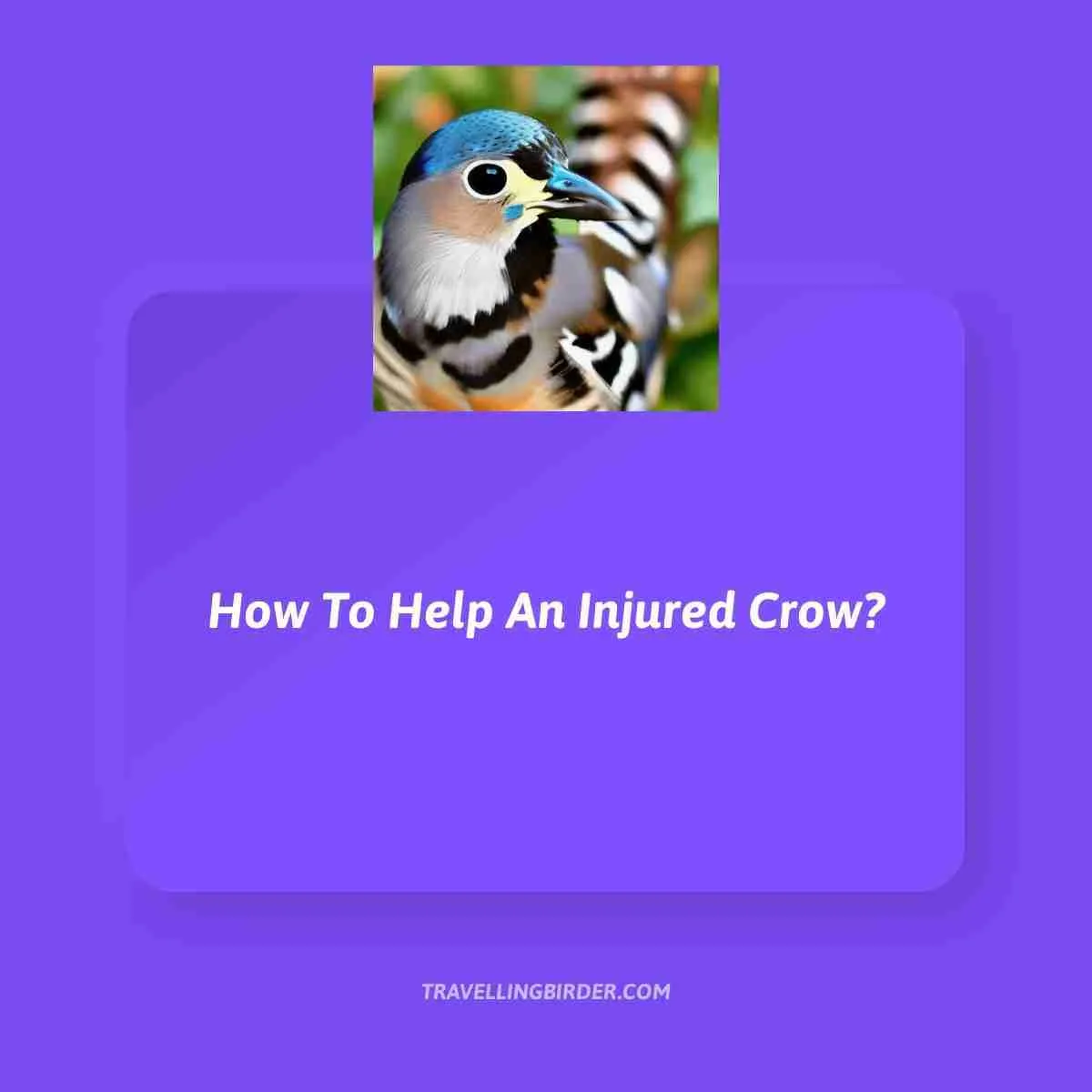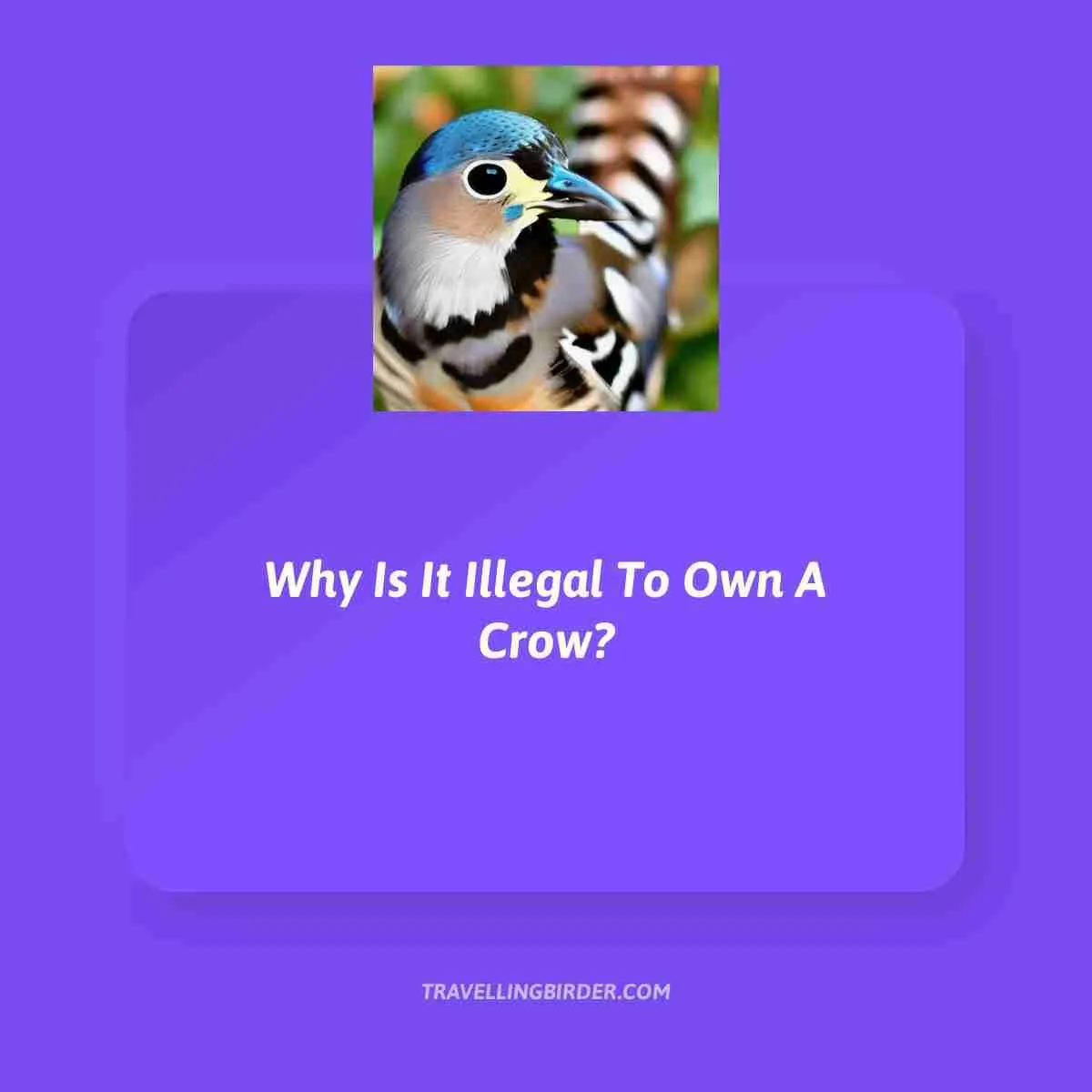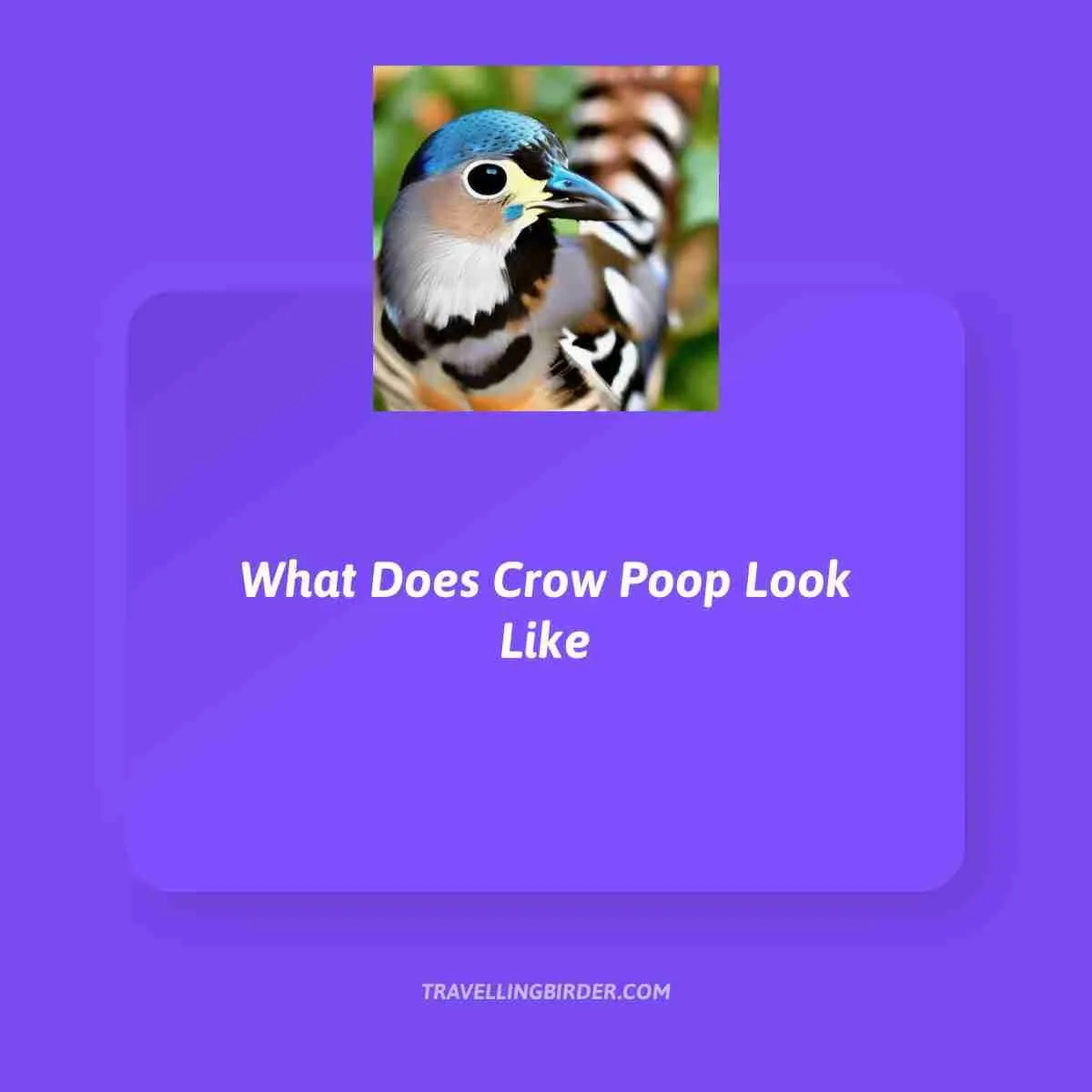As an ornithologist, I often hear of stories of people who come across injured crows. Crows are intelligent birds and can be found in many places around the world. They have adapted to living close to humans, so it is likely that you may encounter a crow at some point in your life. It’s important to know what do if you find an injured crow as they need specialized care and attention. In this article, I will outline how to help an injured crow so that we can ensure their safety and well-being.
When dealing with wild animals, one must take extra caution as they can become frightened or aggressive when encountered by humans. If a person happens upon an injured crow, it’s important to assess whether the bird needs immediate medical assistance or not. A good way to determine this is by observing its behaviour and noting any visible injuries or signs of distress such as labored breathing or limping on one side of its body. If there are no obvious signs of injury but the bird appears weak or lethargic then it should be taken for medical assessment straight away.
The next step involves providing basic first aid treatments until professional help arrives. Keeping the animal warm and ensuring it has access to food and water are two key elements which must be provided immediately after being discovered by a person. Additionally, contact local wildlife rescue centers as soon as possible so they can provide further advice on how best to look after the crow while awaiting transport for medical examination and treatment.
Identifying Injuries In A Crow
The first indication of an injured crow is its behavior. A normally active, social bird may appear lethargic and withdrawn in the presence of humans. They might have difficulty moving or flying due to broken wings, fractures, or other injuries. When attempting flight, a crow’s movements may be slow and labored with frequent stops for rest. Any visible wounds should be carefully noted–abrasions, lacerations and even deep punctures can all indicate injury. In some cases, the bird will give off an unpleasant odor indicating infection has set in.
In addition to physical signs of distress, crows that are ill or hurt often vocalize more than usual as they attempt to call out for help from their flockmates. Such cries are usually loud and desperate sounding; if heard by attentive observers these calls can provide clues about how serious the bird’s condition might be. Without proper care and treatment such issues can quickly worsen over time so it is important to act fast when faced with an ailing crow.
Providing Emergency Care
If an injured crow is discovered, the first step is to provide emergency care. It must be done with caution as crows can become aggressive if they feel threatened. Use thick gloves and a large towel when handling them. If possible, place the bird in a dark box or other enclosed space so that it remains calm. Once secure, check for signs of injury such as broken feathers, wounds, or blood on its body. If there are any visible injuries, immediately contact your local wildlife center for further assistance.
Once you have identified the extent of the injury and received advice from the experts at your local wildlife rehabilitation center, you should begin considering capturing and transporting the injured crow safely.
Capturing And Transporting An Injured Crow
In order to help an injured crow, it should be captured and transported safely. If the bird is in a populated area, use gloves or a towel to attempt capturing it by hand. It’s important to move slowly and cautiously when approaching, as startled crows may become defensive. Once grasped gently, place the crow into a cardboard box with air holes punched along the sides for ventilation. For transport, the box should be secured closed with tape and placed on a flat surface such as the floor of a car. When moving the bird, handle carefully to avoid further injury.
Once at its destination, remove crow from box and secure it in another container suitable for short-term housing while seeking veterinary assistance. Line this carrier with newspaper or other soft material; however ensure that no loose parts are present which could injure the animal if ingested accidentally.
Seeking Veterinary Assistance
Now that an injured crow has been safely captured and transported, it is important to seek veterinary assistance for the bird. Veterinarians have experience with a wide range of avian species and can provide life-saving treatment to an injured or ill animal.
The following steps should be taken:
- Locate a veterinarian who is knowledgeable about birds:
- Check local directories online or in print format.
- Contact wildlife rehabilitation centers for referrals to veterinarians experienced with avian care.
- Prepare for the visit by collecting information on how and when the injury occurred, any other symptoms noticed (e.g., lethargy), and what type of food the bird was eating prior to capture.
- If possible, place the crow in a secure container before bringing it to the vet’s office.
- During the appointment, work closely with your veterinarian on determining a course of action for treating your bird – including medication, diet modification, physical therapy, etc.. Be sure to ask questions throughout this process so you understand what needs to be done both during and after treatment sessions.
Your role as caregiver does not end once medical treatments are complete; proper post-treatment care is essential for successful recovery from injuries sustained while living in the wilds. This includes providing nourishment through appropriate foods, monitoring behavior changes and maintaining cleanliness of housing conditions until such time as release back into nature occurs. With knowledge gained through caring for this one individual bird comes greater understanding of how best help all crows remain healthy members of our diverse environment. As we move forward into releasing a healed crow back into its natural habitat, we must keep these considerations at top-of-mind.
Releasing A Healed Crow
Once the crow has recovered, it is important to properly release it back into the wild. Before releasing a rehabilitated crow, an ornithologist must check that it is in good health and fully capable of living independently. A healthy bird will be alert and active with bright eyes and clean feathers. The wing should also appear strong enough for flight – any sign of weakness or difficulty while testing could indicate further treatment may be needed before being released.
When ready to release, it’s best to do so on a clear day when there are no predators around. Choose an area where food sources are plentiful and other crows can easily be spotted; this will help reintegrate your injured friend into its flock more quickly. Release the bird at a height from which it can fly down safely. If possible, let go of the crow at eye level as this encourages them to take off rather than hop away from you. Once released you can watch from a distance until the bird flies away successfully – if not, capturing it again and taking advice from an experienced wildlife professional would then be advisable.
Frequently Asked Questions
How Can I Recognize The Signs Of An Injured Crow?
In order to recognize the signs of an injured crow, it is essential for one to become familiar with the behavior and physical characteristics of these birds. As an ornithologist, I can say that crows are generally very active creatures who will often fly from place to place in search of food or shelter. Therefore, if you observe a crow which has stopped moving or become grounded, this could be indicative that something may be wrong. Additionally, comparing its appearance to healthy crows of similar age and species should help determine whether there are any visible injuries on its body.
Moreover, pay attention to specific symptoms such as difficulty breathing or excessive vocalization as these could indicate distress or injury. Crows also use their wings and tails differently when they are hurt; so look out for signs like drooping wings or tail feathers held up higher than usual. Furthermore, listen carefully for any abnormal sounds – if the bird appears unable to stand or walk properly then it might need your assistance immediately. All things considered, by paying close attention to the behaviors and physical attributes of crows we can more easily identify when they have been injured and require our help.
What Is The Best Way To Capture An Injured Crow?
When attempting to capture an injured crow, there are a few important considerations. Ornithologists need to take the following steps:
- Locate the bird in its environment and assess the severity of injury
- Gently approach the crow with calming movements and verbal cues
- Determine whether or not it is safe to attempt capture without further risk of injury
- Utilize appropriate tools for humane capture if deemed necessary
If a situation arises where capturing an injured crow appears to be the best course of action, then proper safety measures must be taken prior to any handling. It is essential that ornithologists wear protective clothing such as thick gloves, long sleeves and pants due to potential bites from a scared or cornered animal. Furthermore, they should use non-harmful containment equipment like blankets, nets or cages depending on the size and condition of the bird being handled. Once captured, it can be brought indoors for medical treatment or transported directly to a rehabilitation center if needed.
It is highly recommended that anyone unfamiliar with these techniques seek professional guidance before proceeding with attempted rescue efforts in order to ensure both human and avian safety as well as successful recovery outcomes for any birds involved.
What Can I Do To Help An Injured Crow In The Short Term?
When confronted with an injured crow, the best course of action is to approach it with caution. It is important not to startle or frighten the bird, as this can make its condition worse. The first step in helping an injured crow is to determine whether it requires immediate medical attention from a qualified wildlife rehabilitator. If so, consult your local wildlife center for advice and possible treatment options.
If medical help isn’t necessary right away, then providing temporary care until additional assistance is available may be beneficial. Providing a warm and comfortable place for the animal to rest will give it time to recuperate without further stress or injury. A cardboard box lined with newspaper makes an ideal makeshift nest; alternatively, if there are wooden perches in the area where it was found, you could also provide these as a safe space for the crow to roost while waiting for aid. Additionally, ensuring that fresh water and food are available nearby will ensure that the bird has enough energy to heal properly.
How Can I Find A Qualified Avian Veterinarian?
In order to find a qualified avian veterinarian, one should begin by researching their local area. Avian veterinarians specialize in the treatment of birds and typically have experience caring for crows specifically. It is important to contact multiple clinics prior to selecting one as each may offer different services or qualifications.
The next step would be to inquire about the credentials of any potential veterinarians. Ask if they are experienced with crow care and what type of treatments they can provide. If possible, ask for references from other bird owners who have had successful experiences with that particular clinician. Additionally, it’s important to verify whether or not the vet is licensed and insured so you can ensure your injured crow receives quality care.
It’s essential to take these steps before bringing in an injured crow; doing this will help you feel confident knowing that your bird has access to the best medical attention available.
What Should I Do If The Crow Cannot Be Released Back Into The Wild?
If a crow cannot be released back into the wild, it is important to consider other options. As an ornithologist, I recommend taking the bird to a qualified avian veterinarian as soon as possible. This will ensure that they can diagnose any potential injuries and provide suitable medical treatment if necessary. It may also be beneficial to have them assess whether or not the bird can eventually return to its natural habitat.
In some cases, releasing the crow might not be feasible due to their injury or age. If this is the case, then finding a reputable wildlife rehabilitation center could be another option for providing long-term care. Such centers are staffed with experienced individuals who specialize in caring for injured birds and preparing them for release when appropriate. Additionally, these centers often work alongside local veterinarians to monitor the health of animals in their care until they can safely return to nature.
Is Seeing a Crow a Sign that it May Need Help or be Injured?
Is seeing a crow a sign that it may need help or be injured? Many people wonder about the meaning of seeing a crow in certain situations. While a crow’s presence can sometimes indicate an injured or distressed state, it is essential to consider other factors and seek professional assistance if needed.
Conclusion
As a concerned citizen, it is important to remember that crows play an essential role in our environment. In fact, one study has found that the presence of crows can have a positive effect on seed dispersal and ecosystem diversity in urban areas!
When faced with an injured crow, citizens should take action to help the bird as best they can. Taking steps such as capturing the animal safely, finding qualified veterinary care and determining whether or not releasing them back into the wild is appropriate are all key elements of providing successful aid.
In conclusion, helping an injured crow is more than just humane—it helps promote healthy ecosystems within our cities and towns. Although this process may be daunting at first, taking the time to educate yourself on how to provide proper assistance will go a long way in making sure these birds remain safe and healthy for years to come.

An avid ornithologist, zoologist and biologist with an unwavering passion for birds and wild animals.
Dr. Wilson’s journey in ornithology began in childhood and led him to obtain a Ph.D. in Ornithology from the prestigious Avian Research Institute. He has worked closely with renowned experts in the field and conducted extensive research and field studies globally.




